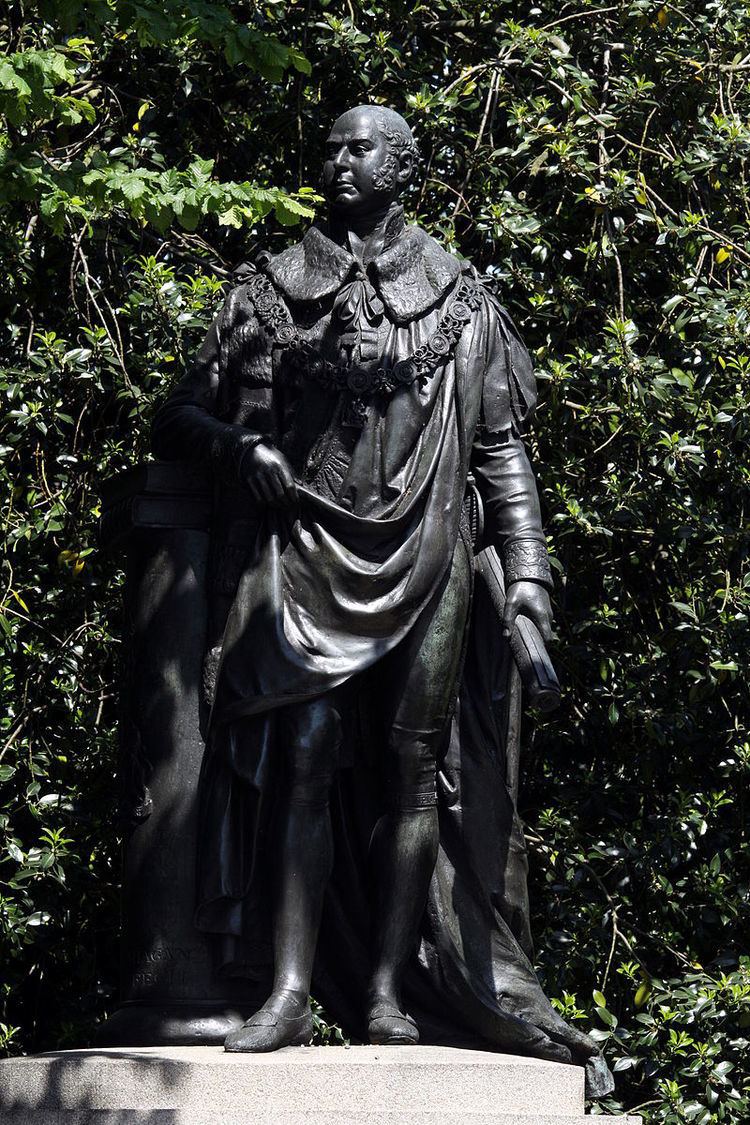Name Sebastian Gahagan | Died 1838 | |
 | ||
Sebastian Gahagan (c.1778–1838) was a sculptor of Irish descent active in London. His most notable works are the monument to Sir Thomas Picton in St Paul's Cathedral, and a statue of the Duke of Kent in Park Crescent, Portland Place. He was also employed by Joseph Nollekens, carrying out the carving of many of his major works.
Contents
My friends tell me it is like me, but that it is too grave for me, though gravity is a part of my character. For the likeness and expression I cannot myself be the judge; but I can vouch for the accuracy, for I have measured it in every point with the callipers.
Life
Gahagan was born in about 1778, the son of the Irish sculptor Lawrence Gagahan; his brothers were Charles (born c.1765), Lucius (1773-1855) and Vincent (1776-1832). He is said to have been born in Dublin, although his father seems to have settled London about 20 years before his birth.
In London he became an assistant to Joseph Nollekens, carrying out the carving of many of his major works, including the statue of William Pitt for the Senate House at Cambridge (1809), and producing copies of busts. In his biography of Nollekens, JT Smith used the relatively small payments received by Gahagan as evidence of the older sculptor's miserliness. In 1809 he received a premium of £50 from the British Institution for Sampson Breaking his Bonds. He was a frequent exhibitor at the Royal Academy from 1802 to 1835, mostly of designs for funerary monuments, with occasional portrait statues and busts. His address is given in the Academy catalogues as 58 Tichfield Street until 1816; 33 King Street, Westminster, between 1817 and 1825; 26, William Street, Regent's Park in 1833; 57, Ernest Street, Regent's Park in 1834 and 25, Little Clarendon Street, Somers Town the next year. At the time of his death he is described as "of Euston-square".
Works
As well as his work for Nollekens, Gahagan received several major commissions. His works as an independent sculptor include:
My friends tell me it is like me, but that it is too grave for me, though gravity is a part of my character. For the likeness and expression I cannot myself be the judge; but I can vouch for the accuracy, for I have measured it in every point with the callipers.
He may also have been responsible for the figures of Isis and Osiris made for the front of William Bullock's Egyptian Hall in Piccadilly (1811), now in the collection of the Museum of London, although some sources attribute these to his father, Lawrence.
Death
Gahagan died, aged 60, in 1838 and was buried in the parish of St Pancras, then in Middlesex, on 7 March of that year. Several other members of his family, apart from his father and brothers became sculptors and modellers; they included his nephew Lucius Gahagan, and his niece, Sarah.
